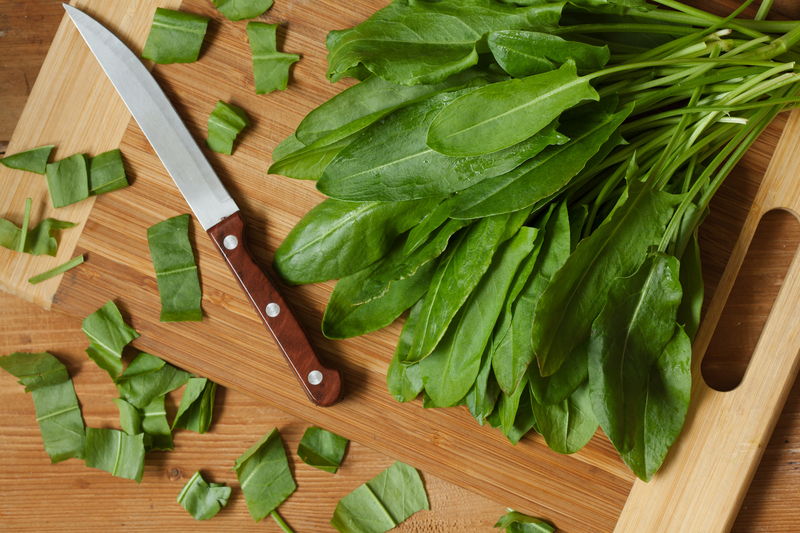Creative Layouts for Herb Gardens
Posted on 23/06/2025
Creative Layouts for Herb Gardens: Inspiration & Practical Tips
Herb gardens offer not only fresh flavors for your kitchen but also aesthetic charm for your outdoor or indoor space. With the rise in home gardening and organic cooking, cultivating your own herbs has never been more popular. But how do you design an herb garden that stands out and suits your unique space? In this comprehensive guide, we'll explore a variety of innovative herb garden layouts, inspiration for both large and compact spaces, and practical tips for planning, planting, and maintaining your aromatic oasis.

Why Focus on Layout When Designing an Herb Garden?
Choosing the right herb garden design is crucial for both productivity and appearance. A thoughtfully planned layout ensures:
- Optimal sunlight exposure for each species
- Efficient use of limited gardening space
- Easy access for harvesting and maintenance
- Beautiful visuals that enhance your home or yard
- Flexibility for expanding your garden over time
Creative layouts can turn even a simple collection of pots into a stunning feature. Below, we'll dive into different layout ideas that accommodate every style, space, and skill level.
Popular and Unique Herb Garden Layout Ideas
There's no one-size-fits-all solution for planting an herb garden. Whether you want a classic kitchen patch, a vertical herb wall, or a modern spiral bed, here are some of the most creative layouts to consider:
The Traditional Rectangular or Row Layout
Ideal for beginners, the rectangular layout is easy to manage and offers ample space for a variety of herbs. Simply divide your raised beds or garden plot into rows for each herb type. This straightforward design allows for:
- Efficient crop rotation and soil management
- Groupings by water or sunlight requirements
- Simple, neat appearance
For a modern twist, alternate the row orientation or use bold color markers to identify each section.
The Circular or Mandala Herb Garden
Want a layout that's both functional and beautiful? The circular herb garden, sometimes called a mandala garden, uses concentric rings to separate different herbs. Planting in a circular pattern offers:
- Central focal points, such as a birdbath or ornamental tree
- Access pathways, so every herb is within reach
- Visually pleasing geometry that stands out in any yard
Use stones or bricks to define the circles and add symmetry to your garden.
The Herb Spiral: A Vertical, Space-Saving Solution
The herb spiral layout is especially popular for small gardens or permaculture enthusiasts. By coiling soil into a spiral that ascends upward, you create microclimates for different herbs:
- Moist, shady sections at the base (great for parsley, mint)
- Sunny, drier areas at the top (ideal for rosemary, thyme, oregano)
- Efficient water use, as rainwater trickles down to lower layers
- Easy harvesting as everything is in close reach
Construct your spiral from rocks, bricks, or recycled materials for an eco-friendly touch.
Vertical Herb Gardens: Going Up for Modern Spaces
Maximizing small patios, balconies, or even indoor kitchens? Vertical layouts let you grow herbs upward instead of outward. Discover these creative solutions:
- Pegboards or pallet planters affixed to walls
- Stacked pots or tiered shelving units
- Hanging baskets or macrame plant holders
- PVC tubes or repurposed shoe organizers with pockets for soil and plants
Vertical layouts not only save space but also turn blank walls into lush, living works of art.
The Herb Knot Garden: History Meets Art
Inspired by European formal gardens, a herb knot garden features intricate, interlocking designs bordered by low-growing herbs or boxwood hedges. While knot gardens require more planning (and sometimes regular trimming), they offer:
- An elegant, classical appearance
- Defined spaces for each herb, reducing competition for resources
- Opportunities for artistic expression
For simplified maintenance, use hardy herbs like thyme and lavender for borders and low-maintenance species within the pattern.
Companion Planting Beds: Blending Herbs with Other Edibles
If you grow vegetables or flowers too, design a companion planting layout. Interspersing herbs with other crops can:
- Help deter pests and attract pollinators
- Create lush, mixed borders
- Boost growth thanks to complementary relationships
Classics like basil with tomatoes or dill among cucumbers make your garden both productive and pest-resistant.
Container and Windowsill Herb Gardens
For city dwellers or those with limited yard space, container gardening offers versatility and mobility. Creative layouts for herb containers include:
- Arranging pots in geometric groupings (triangles, circles, or grids)
- Using a mix of pot sizes for tiered effect
- Placing containers at various heights using stands or shelves
- Grouping herbs by water/sunlight needs in each container
Windowsill gardens ensure your favorite culinary herbs are always at hand--even in apartments!
How to Select the Best Layout for Your Herb Garden
When deciding between these herb garden layouts, consider:
- Space available: Indoor, balcony, patio, yard
- Sunlight levels: Full sun, partial shade, or shaded
- Herbs you want to grow: Mediterranean herbs like rosemary or moisture-lovers like mint
- Visual goals: Formal, modern, whimsical, rustic
- Your time and budget: Some layouts demand more materials or upkeep than others
Start by sketching your available area and mapping out where each type of herb or group might thrive best based on these factors.
Tips for Planting and Maintaining Creative Herb Gardens
- Soil preparation: Most herbs need well-draining soil. Amend your garden bed with compost and sand if needed.
- Watering: Group herbs with similar moisture needs together for easy care.
- Label: Use fun markers, painted stones, or vintage spoons to label each section or pot.
- Harvest regularly: Regular trimming encourages bushier growth and prevents herbs from flowering too early.
- Rotate periodically: In ground beds, move herbs each season to prevent soil-borne diseases.
Pro Tip: Consider adding mulch or groundcovers like creeping thyme between your herbs to retain moisture and limit weeds. Edging with stone, brick, or wood makes your layout pop and keeps your herb garden design tidy.
Designing Herb Gardens for Every Season
For year-round success, plan your layout to include a mix of perennial herbs (such as sage, oregano, mint) and annual herbs (like basil, cilantro, dill). This creates constant greenery and flavor, ensuring your herb garden always looks lush and inviting.
Use seasonal rotation: Plant cool-weather herbs like parsley and chives in spring and fall, switching out for heat-loving basil and lemongrass during summer months.
Frequently Asked Questions About Creative Herb Garden Layouts
Which Herbs Should I Never Plant Together?
Mint is invasive, so plant it in its own container. Fennel can inhibit the growth of many herbs and veggies, so give it its own space. Most Mediterranean herbs--rosemary, thyme, sage--do well together as they require little water.
How Can I Make My Small Herb Garden Appear Larger?
- Use vertical and tiered layouts
- Place mirrors behind pots to reflect greenery
- Choose compact or dwarf herb varieties
What's the Easiest Creative Herb Garden for Beginners?
A simple container or rectangular layout is most accessible. You can expand your herb garden design as your confidence grows.
Can I Create a Herb Garden Indoors?
Yes! Use windowsills, tiered planters, or vertical systems to grow herbs indoors, ensuring at least six hours of sunlight per day (or supplement with grow lights).

Creative Style Inspiration: From Modern to Rustic
Personalize your herb garden by adding:
- Upcycled materials like pallets, recycled pots, or even old tires
- Artistic touches using mosaic stones or painted markers
- Sculptural elements such as trellises, wooden stakes, or obelisks
- Themes--French potager, Mediterranean courtyard, Zen minimalist
Conclusion: Your Path to a Beautiful, Productive Herb Garden
With so many creative layouts for herb gardens to choose from, transforming your available space into a productive and eye-catching extension of your home is easier than ever. Carefully consider your available area, aesthetic goals, and the types of herbs you wish to grow. Whether you're starting with a simple row of pots or a complex spiral bed, a well-designed herb garden is a feast for both the eyes and the senses.
Ready to design your dream herb garden? Start by choosing your favorite layout, gather inspiration from different garden styles, and delight in the aroma, flavor, and beauty your herbal haven will bring to your daily life.
Share your favorite layouts and tips for herb garden designs in the comments below. Happy gardening!

